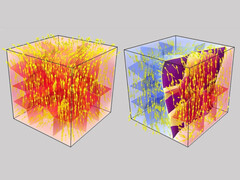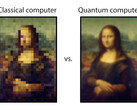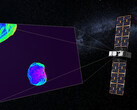Lanthanum, holmium or neodymium: rare earths are used for all kinds of high-tech applications. These range from LCDs and LEDs to high-performance and permanent magnets. The latter can be found in almost every electronic device, and in large quantities in electric cars and wind turbines.
In principle, electric motors and generators could be designed without permanent magnets, but this would noticeably reduce efficiency. In other areas, magnets are actually indispensable.
However, the problems with rare earths are well known. They have to be mined at great expense, tons of overburden for a few grams of ore. And they are rare, which causes prices to fluctuate, driving them in one direction only.
Mining also takes place in just a few regions of the world, which means that 98 percent of the elements needed in the EU, for example, have to be imported. This creates dependencies.
This is where Mammos, the Magnetic Multiscale Modeling Suite, comes into play. In other words, a collection of different methods in different specialist areas to search for novel magnetic substances. The whole thing is bundled together in this one project.
With the help of experiments, simulations and artificial intelligence, the aim is to find ways to create permanent magnets without using expensive and rare elements, or at least with significantly fewer of them. These efforts are similar to those seen in the production of rechargeable batteries and solar cells.
The Max Planck Institute, Leibniz Institute, the University of Grenoble, Krems and Uppsala are working together on this project as well as Bosch and Siemens, which would certainly benefit from an inexpensive replacement for the alloys currently used.
An interesting point is the open source character of the project. The programs and data are to be made available on the Internet. For this purpose, this website is used as a central point of contact.
It will be interesting to see whether practical findings will emerge over the next four years, which is the current duration of the project.















